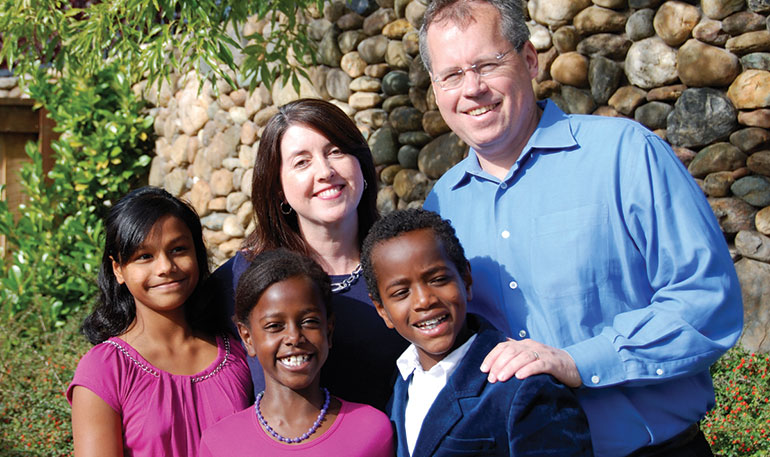One afternoon the kids and I were out running errands. As always, my younger daughter, Lemlem, and my son, Gobez, both adopted from Ethiopia, danced ahead of me on the sidewalk, while my oldest daughter, Didi, adopted from India, lagged behind. Suddenly, Lemlem spotted an ATM. She dashed to the machine and merrily started punching buttons. Gobez raced after her, but before he could commandeer the second terminal, a bank customer, a woman about my age, got to it first.
Like most seven-year-old boys, Gobez has almost no sense of personal space. He’s as eager, clumsy, and curious as a Labrador puppy. However, he’s taller and more muscular than many 10-year-olds, and he is black. Lately, I’ve occasionally sensed a weird vibe from white strangers around my son, as if they are already wary of the man he will become. So, when Gobez crowded close to the woman as she slid her card into the ATM, leaning in to watch the magic machine spit out money, I nearly panicked.
“Gobez,” I shouted. “You’re in that lady’s space bubble!”
Maybe the woman heard the edge in my voice. She looked up and half-shrugged, half-waved to me. From the look in her face, I could see that she was a mom, and that she understood little boys. I felt so relieved I could have hugged her, but the woman grabbed her cash and moved on.
In the car on the way home, I reminded Gobez and the girls that bank information is private. I told my son, “That lady didn’t think you were trying to rob her, but someone who was cranky or nervous might have thought so.”
I hesitated. Should I take the lesson a step further, or was that enough for now? I thought about the older white man we’d encountered the week before at our health club. That day, all three kids galloped ahead of me through the hallway, despite my warnings to slow down. They took the man by surprise as he entered the building. Seeing their brown faces, he stopped and glared.
“Do those kids belong here?” he barked.
“They’re my children,” I said, and kept walking.
The kids didn’t seem to hear the man’s ugly remark, but the bitterness of the exchange stayed with me. And so I made myself continue talking.
“You know, Gobez,” I struggled for the right words. “Some people who don’t know any better think that brown people are more likely to commit crimes. The lady at the ATM today didn’t think that, but a person who had the wrong idea about brown people might have called the police when you got too close at the bank, even though you’re just a little boy. You could have gotten in trouble, even though you didn’t mean to do anything wrong.”
A knot of sadness welled in my chest. I’d taken on the challenges of transracial parenting thoughtfully, but no one warned me that, one day, I would have to teach my son that some people would fear him because of the color of his skin, nor that I would have to help him understand how their fears might put him at risk. He will learn these lessons with or without me. It’s better for both of us if I’m there.
JOIN You are viewing this exclusive AF content as a guest. To access our full Adoption Parenting Library — plus digital issues, eBooks, expert audio and more — join Adoptive Families today.  |



